There’s theory, and then there’s life. Therein lies the value of case studies, and the usage of “real life examples” is especially helpful for those in the business of boosting internet traffic conversions.
Conversion rate optimization (CRO) is about more than just increasing sales – and there’s a lot more to be learned than simply what increases revenue and what doesn’t. CRO processes can help businesses:
- Discover what works (and what doesn’t work) for target users
- Take the guesswork out of predictable growth
- Understand complex relationships between user experiences and content
The conversion rate optimization examples below employ various strategies, use a variety of tools, and elicit help from specialists outside their expertise to boost conversions and achieve their goals – but they also learn important lessons along the way.
1) Identify Your Target KPIs Early
How can you expect actionable results if you don’t know what you’re testing? That’s the philosophy behind identifying your KPIs as early as possible – preferably, long before you even start the CRO process. One effective method of identifying KPIs is to separate indicators into two categories: micro conversions and macro conversions.
While macro conversions are typically what senior executives are most interested in (such as the number of sales), micro conversions are also important for a couple of reasons. First, these conversions can represent “stepping stones” towards the ultimate goal of a macro conversion. Alternatively, micro conversions may not lead to a macro conversion, but instead provide critical information about your customers.
An interesting case study on the value of micro and macro conversions involves Bakker-hillegom, an eCommerce website. They were achieving success with a micro KPI – engaging users with content on their website with conversions at 105 percent. These conversions were driven by an effective banner ad. However, they were not achieving macro conversions, which was measured by sales.
In order to address this, they employed the successful banner ad on every info page. In the end, this strategy resulted in an increase in macro conversions of over 104 percent. Not only did this micro trend show them what works for their audience, but it also served as an intermediate step to serious macro conversions.
2) Employ Analytics Software
For any company, you don’t want just any conversions; you want conversions that will help you achieve your business goals. Whether that’s making large sales and achieving your target revenue growth or attracting a certain quality of employees to a company, analytics can help drive the kind of conversions you want.
Lots of conversion rate optimization examples deal with KPIs like email sign-ups or shopping cart checkouts, but this wasn’t the goal for Teach for America. Instead, this organization was seeking a very different type of conversion: attracting highly-competitive educators.
For example, LunaMetrics leveraged Tag Manager Data and audience segmentation to boost this very specific type of conversion for Teach for America. Custom segments were built within Google Analytics, allowing the organization to target the kinds of prospects they wanted. In the end, Teach for America experienced a 57 percent increase in conversions for their target prospective employees thanks to their application of analytics and audience targeting methods.
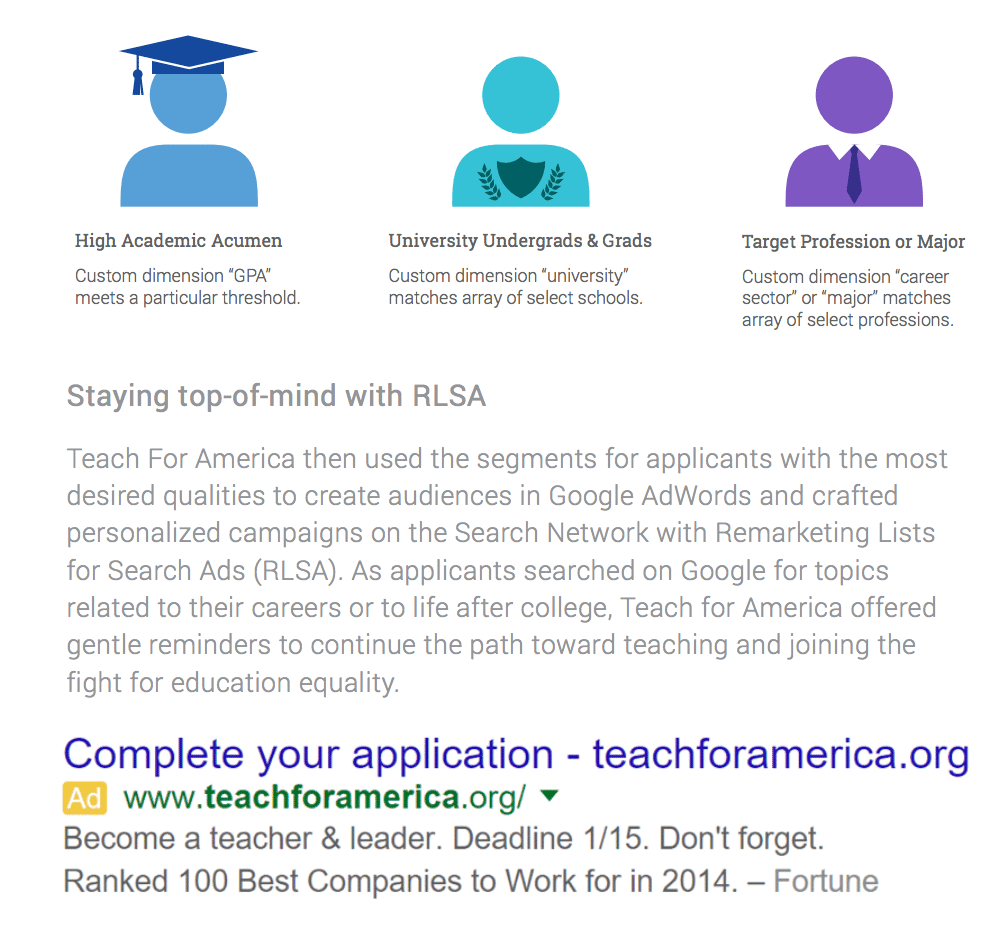
3) Ask Your Users for Feedback
Your users are some of the most important tools you have when it comes to CRO. After all, they’re the ones engaging with your content. No matter what CRO method you’re about to use, it’s almost always a good idea to start the process by collecting user feedback on your target KPIs. Doing this will help you focus your CRO strategies and be more precise with any changes you make and test.
A fascinating case study was the optimization of the website Truckers Report, which relied very heavily on user surveys. Truckers similar to the target audience of the website were extensively surveyed, asked to participate in user testing, and followed-up with for additional feedback. After several rounds of testing (remember, CRO is iterative) based on the results from user feedback, researchers succeeded in improving conversions by nearly 80 percent.
Another similar case study is online retailer Majestic Wines, which redesigned their web page almost exclusively based on user feedback and surveys. Once they engaged their users, they discovered their web pages were visually distracting: there wasn’t emphasis on their key sales point, and clarity was missing. So, the team tightened up and de-cluttered the design, emphasized their services, and even added a video to the page – exactly responding to user concerns and feedback. The result? A 201 percent increase in conversions for their inquiry form submission KPI.

4) Experiment with Wording and Colors
A lot of CRO is about psychology. Delivering what different buyer personas want and will respond to is key for success. Because different audiences respond differently given their unique backgrounds, concerns, and needs, you’re going to need to choose your words carefully – especially on Call-to-Action (CTA) buttons and landing pages. The same can be said of color choices. Different colors dominate certain markets, such as black for luxury products and pink for feminine products.
User testing, segmentation, and profiling are all good methods of getting an idea of general preferences and responses, but your users can still surprise you.
One of the more famous conversion rate optimization examples with regards to wording is Switch Video’s single-word change on a CTA button. Updating the button from “Get a Free Consultation” to “Get a Free Quote” boosted conversions by 221 percent. Similarly, the website Performable saw a 21 percent CTR increase just from changing a button from green to red.
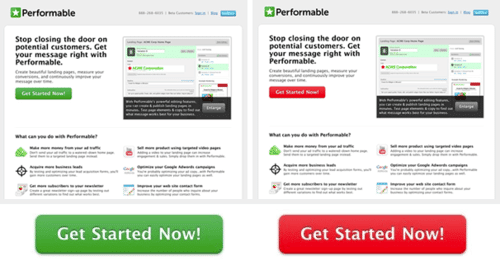
5) Overhaul Ineffective UX Designs
If your website is easy and satisfying to use, you’ll foster more conversions. But why is this? Research out of the University of Zaragoza demonstrated some fascinating results, like the fact that great UX design leads to increased user trust and loyalty, and that satisfaction and trust are extraordinarily linked in consumer websites.
Aside from designing a smooth and satisfying experience for web page visitors, it’s equally important to present an effective visual design. A concept known as “visual hierarchy” describes the ways in which people tend to view content (and the order in which they look at things). A great case study applying the power of visual hierarchy is Underwater Audio, a company that sells waterproof headphones.
Underwater Audio knew that when we look at content on a web page, we tend to look in an “F-shape” across the page. So, they rearranged their home page with the same content, but delivered content to be viewed strategically in that order. This change spurred a 35 percent increase in sales.
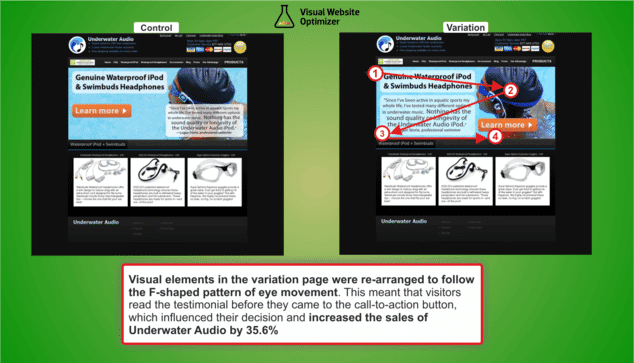
6) Take Advantage of A/B Testing
Many of the examples above have employed A/B testing, but the method itself deserves specific attention – especially since it’s so easy to misuse. For this example, we’re going to take a look at Buffer, which is a website for social media management. A/B testing relies on changing one single variable on your website to see if conversions increase.
Buffer received a brand new landing page based on user feedback and UX design principles. The result was impressive: a 16 percent increased conversion rate just from a new landing page. The beauty of A/B testing is that if Buffer wanted to take this a step further, they could repeat the process, but they used a new landing page as the baseline (or with other pages on their site) to continuously improve over time.
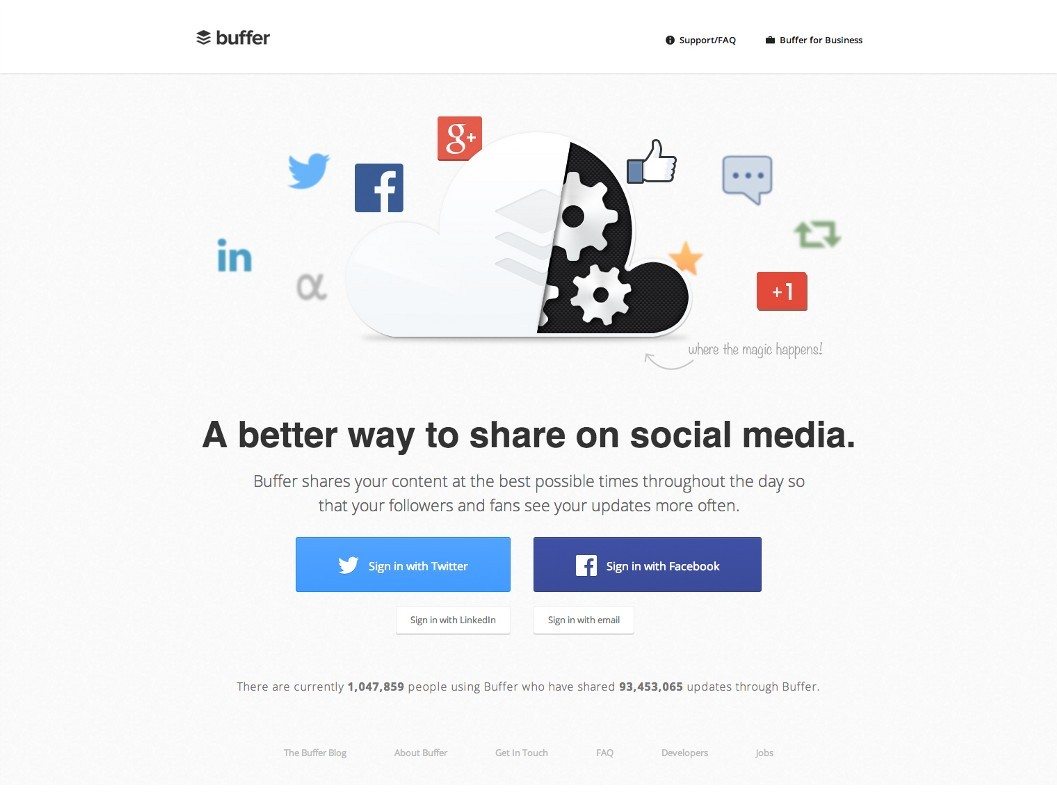
One of the most important concepts brought up by Buffer’s Brian Lovin is that despite a satisfying increase of 16 percent, he was far from finished. This is the appropriate attitude for any A/B testing. He goes on to describe his next A/B testing goals, including adding more company features to the page and working on mobile app visual optimization. At the end of the day, any increase in conversions can always be higher, and the iterative nature of CRO is strongly represented by this continual process of improvement.
It’s also worth noting that many experts prefer A/B testing over its cousin, multivariate testing. While multivariate testing enables you to change more than one variable at a time, it relies on certain statistical assumptions and does not work with small sample sizes. Because of this, you will see A/B testing much more frequently.
7) Simplify Your Funnel
The simplicity of your conversion funnel is paramount to your CRO. In e-commerce, of the 65 percent of abandoned shopping carts, 11 percent are due to overly-complex checkout procedures. Most successful conversion rate optimization examples rely on simplifying your funnel by removing steps, consolidating billing and shipping information, or making sign-ups easier. A lot of simplification can be tackled at the same time as UX design.
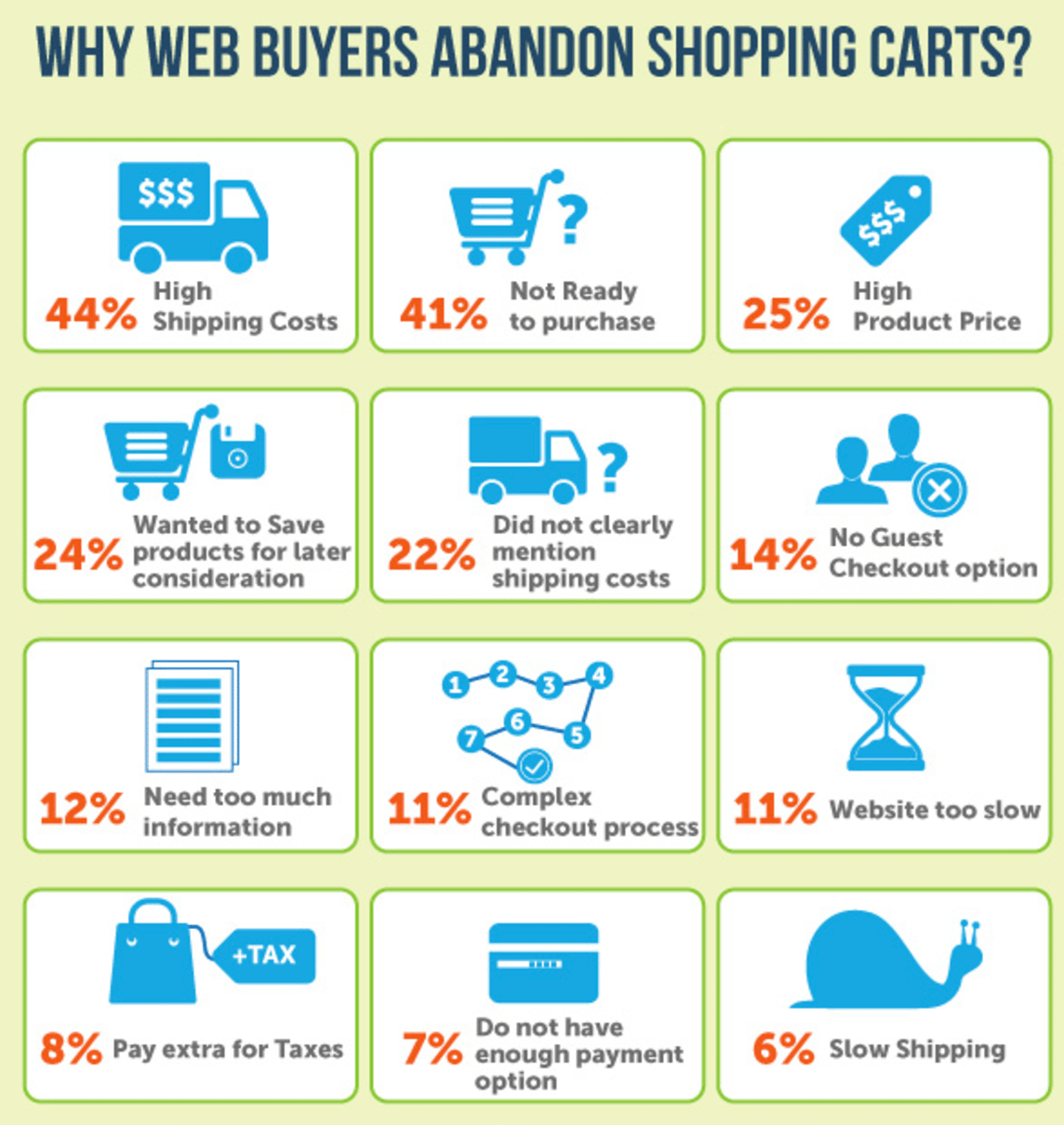
8) Make Larger Changes for More Dramatic Results
There are plenty of strategies for deciding exactly what to change during A/B testing – particularly since the structure of the test requires that you choose just one change to make. For Neil Patel and Joseph Putman of Quick Sprout, they believe that big gains come from taking risks and making big changes. So when they decided to optimize using A/B testing, they chose a bold strategy.
First, they targeted their KPI (remember from #1, you first have to decide what you’re testing!), which was the number of requests sent from their “Contact” page. Rather than tweaking the color of a button or block of text on the contact page, they changed the entire page to an infographic – which tripled their results.
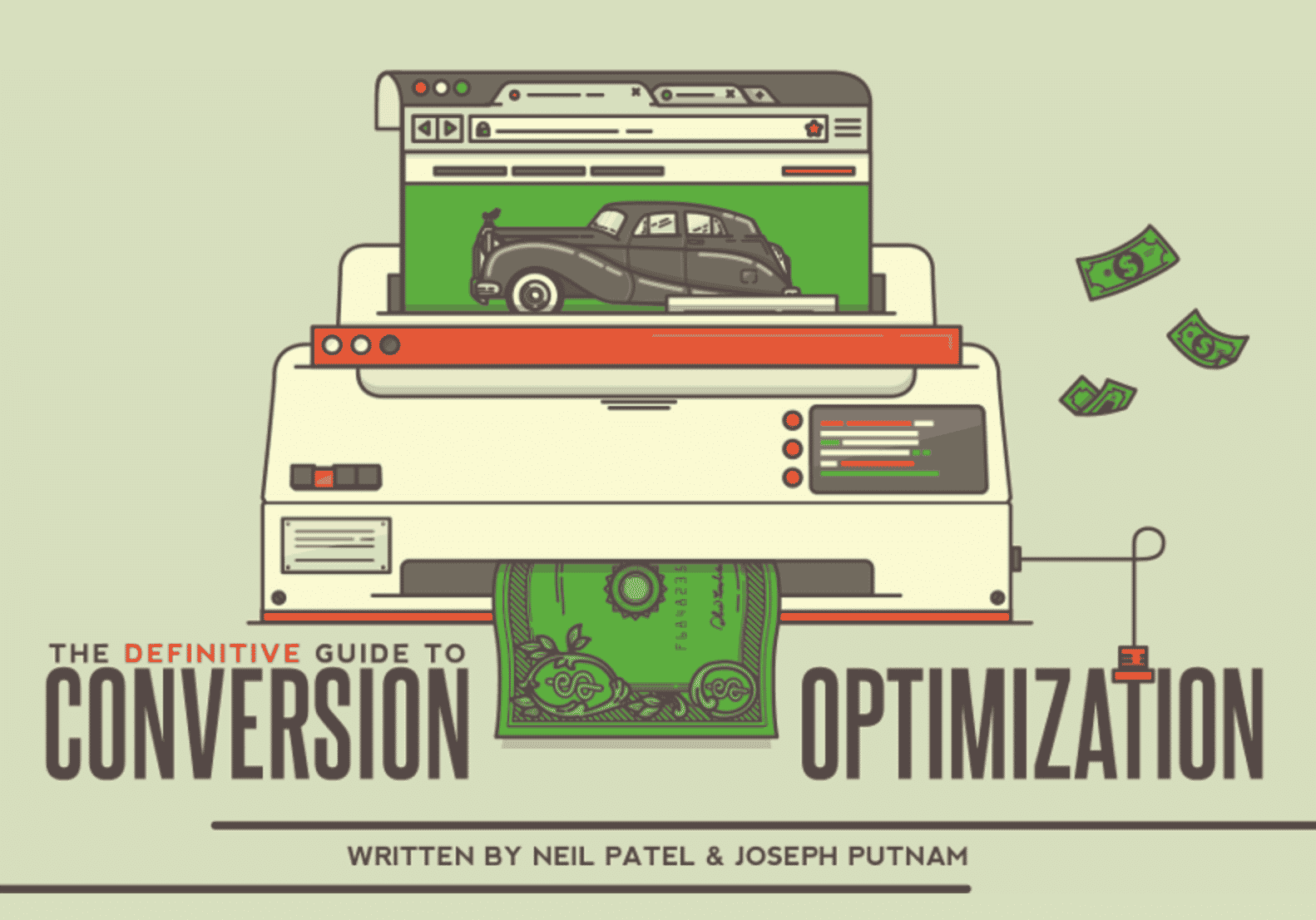
9) Update Your SEO
For so many organizations, knowledge of SEO remains either outdated or a complete mystery. There is an art to search engine optimization – and it pays to understand it (or to hire someone who does). With SEO comes CRO; increased traffic and visibility opens up new opportunities for prospects and conversions.
One great example of a successful SEO overhaul is US Storage Search. The company wasn’t getting as many organic search traffic as they needed, and hoped to use SEO to land a position on Google’s first page for searches like “self storage.”
Through a link popularity campaign, writing optimized content (the original site had almost none), URL re-designs, and more, the company was able to land a spot on Google’s first page of results for multiple keywords, and increase their organic search traffic by 400 percent.
10) Trust Your Users First, Best Practices Second
Best practices are a based off of proven user response patterns, right? Almost. While best practices are based on large amounts of repeatable testing and research, there’s no exact replica for your users. A great example is DIY Themes’ Derek Halpern’s experiment.
Halpern placed a social proof statistic (“Join 14,752 others and get free updates!”) next to an email subscription box, and then published another version without the statistic. Best practices would suggest that the button with social proof alongside it would perform better.
But that’s not what happened.
In fact, the version without the social proof saw 102 percent more sign-ups.
Another example of a best practices-defying case study is that of Compare Courses, an academic website. To increase conversions, the company played by the rules and changed a lead inquiry form placement. They had applied multiple visual design principles and testing programs before they made this change to give them the best chance at success. Despite all this, they saw a 53 percent decrease in lead generation.
The lesson here is the same as you’ll learn in basic statistics: what applies to a population does not always apply to a subgroup of that population.
Final Thoughts
Optimizing your conversion rates is all about using the tools at your disposal, experimenting and testing relentlessly, and most importantly, listening to your users. If we’ve learned anything from the countless CRO success stories out there, it’s that CRO is a cyclical, iterative process that can always be repeated and optimized for better and better results.






